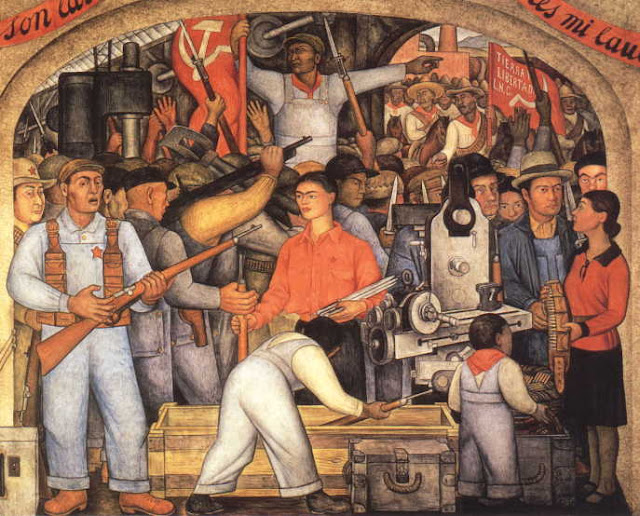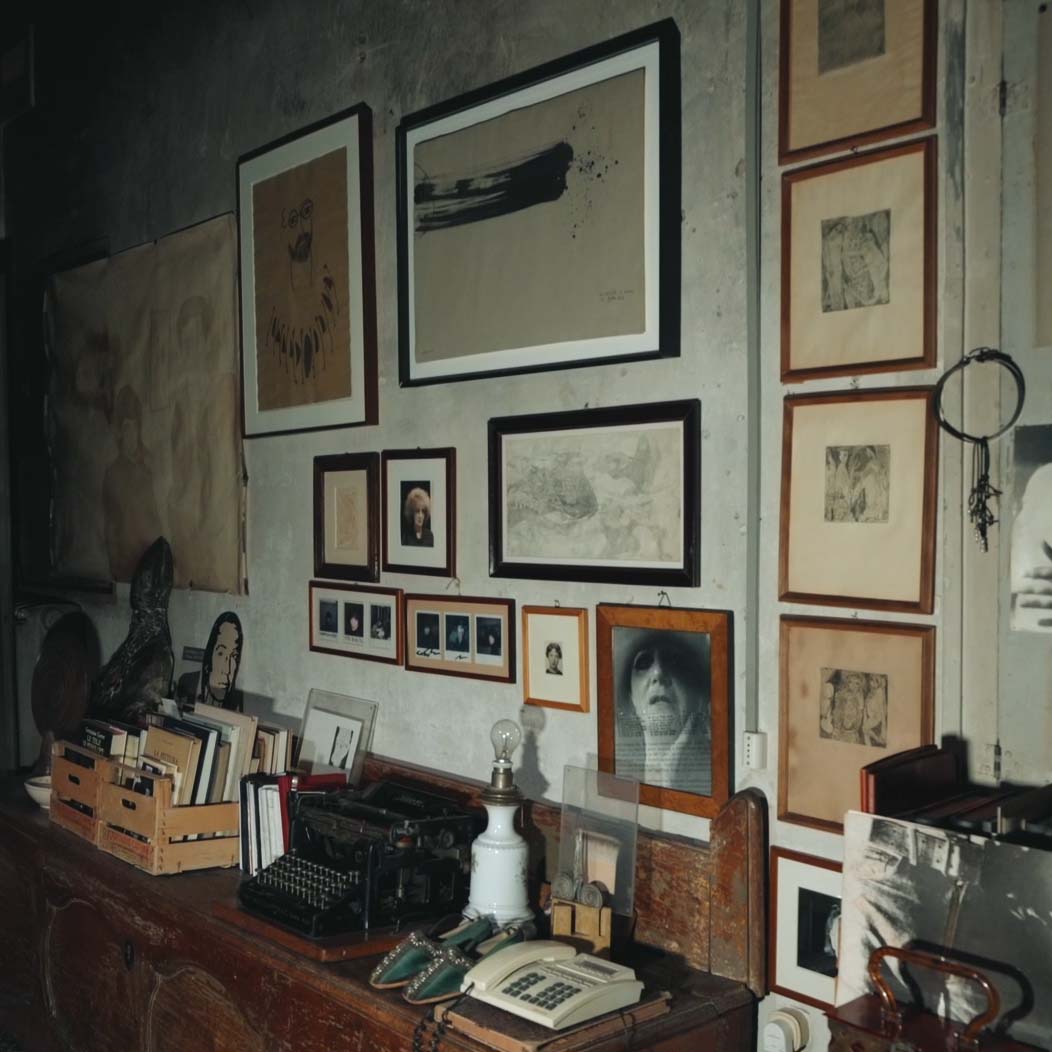Hannah Ryggen admired the Mexican murals not only because of their powerful visual language. The revolutionary Muralists also created politically explosive works of art.
Be it emancipated images of women, power abuse or the horrors of war: From 1923 onwards, Hannah Ryggen wove large-size tapestries that were politically explosive. She felt it important to make sure the statements by her monumental formats were accessible to the general public instead of the ideas getting lost on the walls of private homes.
The key Mexican Modernist painters also set great store on ensuring public visibility for their monumental wall paintings, the “Murales” as they were called and which they created at roughly the same time as Hannah Ryggen was busy weaving her tapestries. However, unlike the Scandinavian artist, who took a clear stand on international conflicts and current world issues in her woven works, artists such as Diego Rivera and his contemporaries focused almost exclusively on Mexico’s domestic political scene.
The manifesto called for the establishment of a social art form
In 1924 Mexican artist David Alfaro Siqueiros wrote a firebrand piece for “el machete” (a Mexican daily) in which he said a stance should be taken championing the country’s indigenous population and protesting against the threat of a military coup led by President Adolfo de la Huertas (Abb. 1). Moreover, in his so-called “Manifest of Workers, Painters and Sculptors” Siqueiros called for the creation of a social art form to the benefit of the indigenous population and to spread the aesthetics of indigenous art as the basis for modern art in Mexico. From an artistic viewpoint this demand entailed turning away from European Modernism as the all-embracing role model and instead concentrating on Mexico’s national history – meaning a kind of return to “their own” cultural traditions.
Sindicato de Artistas, Pintores y Grabadores Revolucionarios, Image via googleusercontent.com
David Alfaro Siqueiros, Auszug aus „el machete“, Image via metmuseum.org
Siqueiros’ demand can be attributed to the collapse in academic training for artists during the Mexican Revolution, during which Mexican culture was neglected and the European art forms admired as the only true art. The manifesto was supported by prominent artists such as Diego Rivera, José Clemente Orozco and Xavier Guerrero.
The goal of the syndicate of workers, painters and sculptors that emerged from this was to influence prevailing art tastes through the medium of public art and in this contribute to popular education and above all the social class struggle. In this regard and under the sign of a return to the founders of Mexican art, the manifesto addressed the country’s indigenous population, which had been subject to centuries of humiliation, and whose identity emerged as the key motif of Mexico’s post-revolutionary art.

José Clemente Orozco, Gods of the Modern World, Credit Courtesy of the Hood Museum of Art, Dartmouth College, 2012 Artists Rights Society (ARS), New York/SOMAAP, Mexico City, Image via nyt.com

This new approach was realized through large-format works such as the “Murales”, painted on the outside or inside walls of public buildings in Mexico, something that amounted to a paradigm shift. ). Many of these publicly accessible works addressed historical events and the political struggles in Mexico at the time. At the same time, they reflected the artists’ socialist convictions. The “Murales” were financed by the Mexican government through Minister of Education José Vasconcelos with a view to conveying a specific national history to the largely illiterate poorer stratum of the population. The fact that the Mexican government helped fund the creation of the “Murales” shows how their monumental format also fulfilled a prestigious role.
The motifs showed a supposedly official version of history
With their pictorial program, as formulated in exemplary terms in 1935 by Diego Rivera in his painting at the Palacio Nacional, the Muralists idealized and instrumentalized the indigenous population. In the scenes and narratives they took, the represented the purportedly official version of the nation’s history and present. By subjectively depicting the Revolutionary events, the Muralists took an artistic stance championing the post-Revolution Mexican state and constructed what they claimed was a national cultural identity.


Diego Rivera, En el arsenal, 1928, Image via blogspot.com
Among all these examples of images we can discern social and political messages as well as the glorification of national values, above all in connection with patriotic heroes. The Mexican “Murales” are thus the visualization of the new national focus of Mexican art that its champions called for – a painted manifesto. The Muralists painted manifestos just as Hannah Ryggen wove them, with the difference that unlike Ryggen’s tapestries the murals were intended to promote the national interests of their home country.









